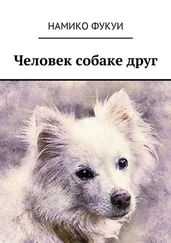A. A. Rouse, P. F. Cook, E. W. Large, and C. Reichmuth, “Beat Keeping in a Sea Lion as Coupled Oscillation: Implications for Comparative Understanding of Human Rhythm,” Frontiers in Neuroscience 10, no. 257 (2016).
L. Marino, T. L. Murphy, A. L. DeWeerd, J. A. Morris, S. H. Ridgway, A. J. Fobbs, N. Humblot, and J. I. Johnson, “Anatomy and Three-Dimensional Reconstructions of the Brain of a White Whale (Delphinapterus Leucas) from Magnetic Resonance Images,” Anatomical Record 262 (2001): 429–439; L. Marino, K. D. Sudheimer, D. A. Pabst, W. A. McLellan, D. Filsoof, and J. I. Johnson, “Neuroanatomy of the Common Dolphin (Delphinus Delphis) as Revealed by Magnetic Resonance Imaging,” Anatomical Record 268 (2002): 411–429.
D. Reiss and L. Marino, “Mirror Self-Recognition in the Bottlenose Dolphin: A Case of Cognitive Convergence,” Proceedings of the National Academy of Sciences of the United States of America 98 (2001): 5937–5942.
H. H. A. Oelschlager and J. S. Oelschlager, “Brain,” in Encyclopedia of Marine Mammals, edited by W. F. Perrin, B. Wursig, and J. G. M. Thewissen, 134–149 (Burlington, MA: Academic Press, 2009).
A. S. Frankel, “Sound Production,” in Encyclopedia of Marine Mammals, edited by W. F. Perrin, B. Wursig, and J. G. M. Thewissen, 1056–1071 (Burlington, MA: Academic Press, 2009).
W. W. L. Au, “Echolocation,” in Encyclopedia of Marine Mammals, edited by W. F. Perrin, B. Wursig, and J. G. M. Thewissen, 348–357 (Burlington, MA: Academic Press, 2009).
V. V. Popov, T. F. Ladygina, and A. Y. Supin, “Evoked Potentials of the Auditory Cortex of the Porpoise, Phocoena Phocoena,” Journal of Comparative Physiology A 158 (1986): 705–711; V. E. Sokolov, T. F. Ladygina, and A. Y. Supin, “Localization of Sensory Zones in the Dolphin’s Cerebral Cortex,” Doklady Akademy Nauk SSSR 202 (1972): 490–493; A. V. Revishchin and L. J. Garey, “The Thalamic Projection to the Sensory Neocortex of the Porpoise, Phocoena Phocoena,” Journal of Anatomy 169 (1990): 85–102.
Oelschlager and Oelschlager, “Brain.”
M. Kossl, J. C. Hechavarria, C. Voss, S. Macias, E. C. Mora, and M. Vater, “Neural Maps for Target Range in the Auditory Cortex of Echolating Bats,” Current Opinion in Neurobiology 24 (2014): 68–75.
J. Parker, G. Tsagkogeorga, J. A. Cotton, Y. Liu, P. Provero, E. Stupka, and S. J. Rossiter, “Genome-Wide Signatures of Convergent Evolution in Echolocating Mammals,” Nature 502 (2013): 228–231.
M. Wells, “In Search of the Buy Button,” Forbes, September 1, 2003, 62–70.
Впоследствии Вулу пришлось озаглавить эту работу в более прозаическом ключе: see E. Vul, C. Harris, P. Winkielman, and H. Pashler, “Puzzlingly High Correlations in fMRI Studies of Emotion, Personality, and Social Cognition,” Perspectives on Psychological Science 4 (2009): 274–290.
R. A. Poldrack, “Can Cognitive Processes Be Inferred from Neuroimaging Data?” Trends in Cognitive Sciences 10 (2006): 59–63.
L. Barrett, “Why Brains Are Not Computers, Why Behaviorism Is Not Satanism, and Why Dolphins Are Not Aquatic Apes,” Behavior Analyst 39 (2016): 9–23.
G. Berns, “Dogs Are People, Too,” New York Times, October 5, 2013.
G. S. Berns, J. C. Chappelow, M. Cekic, C. F. Zink, G. Pagnoni, and M. E. Martin-Skurski, “Neurobiological Substrates of Dread,” Science 312 (2006): 754–758.
Велкро (Velcro) – текстильная застежка-липучка. – Прим. пер .
R. J. Herrnstein, “Relative and Absolute Strength of Response as a Function of Frequency of Reinforcement,” Journal of the Experimental Analysis of Behavior 4 (1961): 267–272.
Еще раньше парадокс описан у Аристотеля в трактате «О Небе».
M. Hauskeller, “Why Buridan’s Ass Doesn’t Starve,” Philosophy Now 81 (2010): 9.
G. Loomes and R. Sugden, “Regret Theory: An Alternative Theory of Rational Choice Under Uncertainty,” Economic Journal 92 (1982): 805–824.
N. Camille, G. Coricelli, J. Sallet, P. Pradat-Diehl, J.-R. Duhamel, and A. Sirigu, “The Involvement of the Orbitofrontal Cortex in the Experience of Regret,” Science 304 (2004): 1167–1170.
A. P. Steiner and A. D. Redish, “Behavioral and Neurophysiological Correlates of Regret in Rat Decision-Making on a Neuroeconomic Task,” Nature Neuroscience 17 (2014): 995–1002.
J. Kaminski, J. Call, and J. Fischer, “Word Learning in a Domestic Dog: Evidence for ‘Fast Mapping,’” Science 304 (2004): 1682–1683.
J. W. Pilley and A. K. Reid, “Border Collie Comprehends Object Names as Verbal Referents,” Behavioural Processes 86 (2011): 1641–1646.
S. Nishimoto, A. T. Vu, T. Naselaris, Y. Benjamini, B. Yu, and J. L. Gallant, “Reconstructing Visual Experiences from Brain Activity Evoked by Natural Movies,” Current Biology 21 (2011): 1641–1646.
A. G. Huth, W. A. de Heer, T. L. Griffiths, F. E. Theunissen, and J. L. Gallant, “Natural Speech Reveals the Semantic Maps That Tile Human Cerebral Cortex,” Nature 532 (2016): 453–458.
E. Van der Zee, H. Zulch, and D. Mills, “Word Generalization by a Dog (Canis Familiaris): Is Shape Important?” PLoS ONE 7, no. 11 (2012): e49382.
B. Landau, L. B. Smith, and S. S. Jones, “The Importance of Shape in Early Lexical Learning,” Cognitive Development 3 (1988): 299–321.
P. Bloom, “Can a Dog Learn a Word?” Science 304 (2004): 1605–1606.
S. Pinker and R. Jackendoff, “The Faculty of Language: What’s Special About It?” Cognition 95 (2005): 201–236.
R. J. Schusterman and K. Krieger, “California Sea Lions Are Capable of Semantic Representation,” Psychological Record 34 (1984): 3–23.
J. C. Lilly, Communication Between Man and Dolphin: The Possibilities of Talking with Other Species (New York: Julian Press, 1978).
L. M. Herman, D. G. Richards, and J. P. Wolz, “Comprehension of Sentences by Bottlenosed Dolphins,” Cognition 16 (1984): 129–219; L. M. Herman, S. A. Kuczaj, and M. D. Holder, “Responses to Anomalous Gestural Sequences by a Language-Trained Dolphin: Evidence for Processing of Semantic Relations and Syntactic Information,” Journal of Experimental Psychology: General 122 (1993): 184–194.
A. G. Huth, S. Nishimoto, A. T. Vu, and J. L. Gallant, “A Continuous Semantic Space Describes the Representation of Thousands of Object and Action Categories Across the Human Brain,” Neuron 76 (2012): 1210–1224.
C. A. Muller, K. Schmitt, A. L. A. Barber, and L. Huber, “Dogs Can Discriminate Emotional Expression of Human Faces,” Current Biology 25 (2015): 1–5.
Читать дальше
Конец ознакомительного отрывка
Купить книгу







![Рона Цоллерн - Старший мальчик и другие рассказы из книги «Obscura reperta [Тёмные открытия]»](/books/442640/rona-collern-starshij-malchik-i-drugie-rasskazy-iz-thumb.webp)




